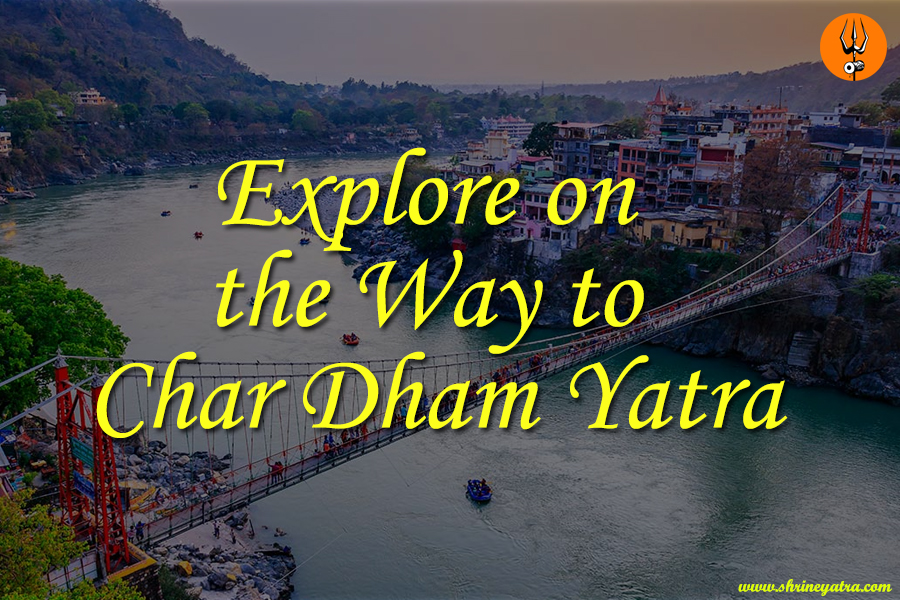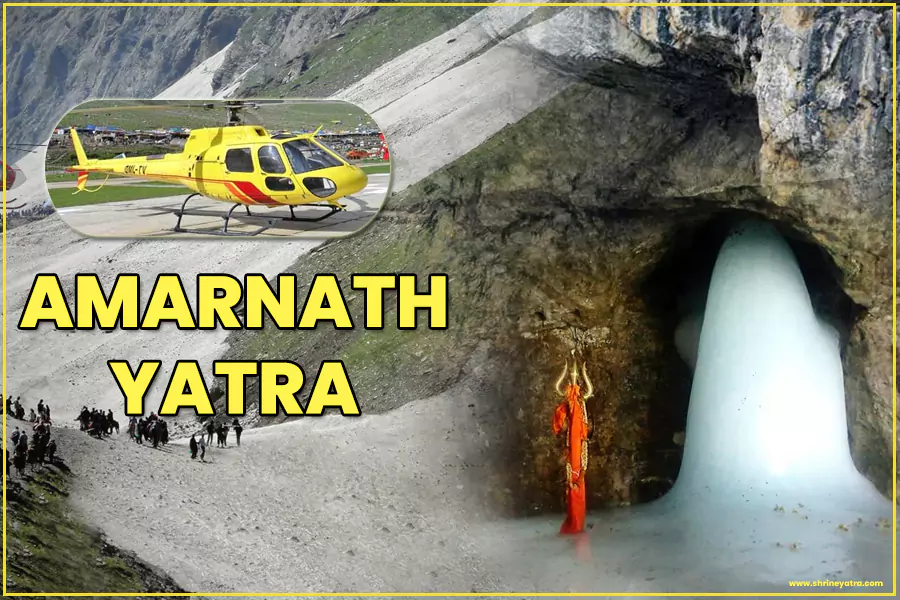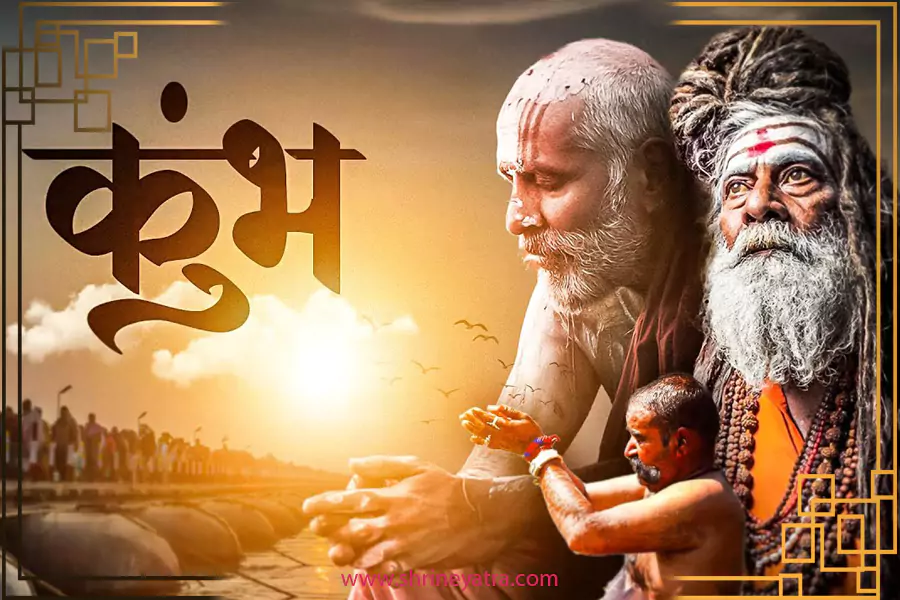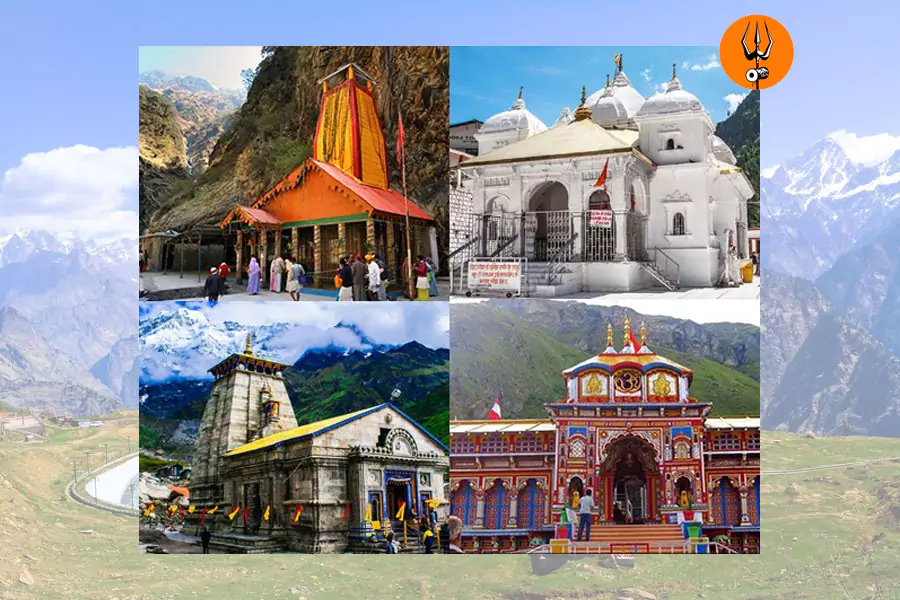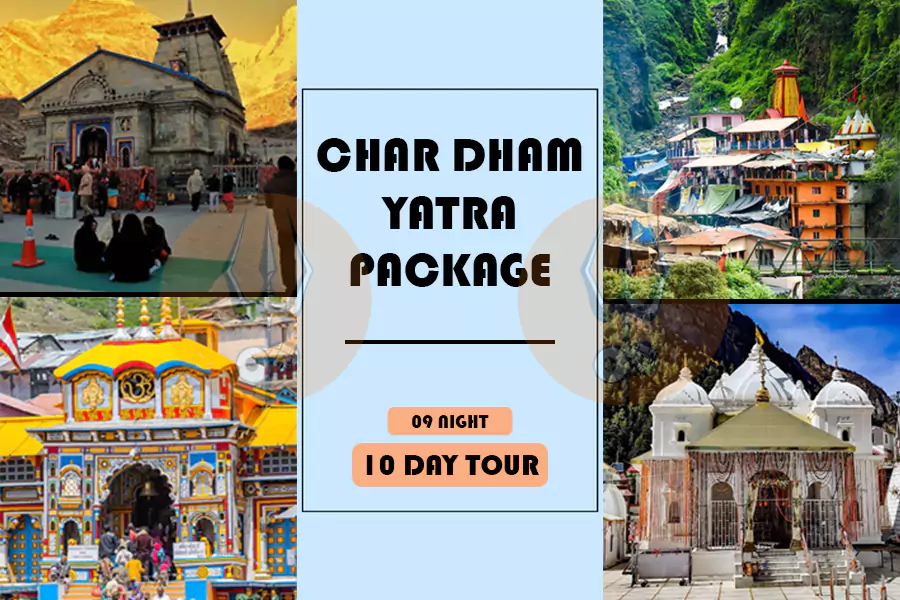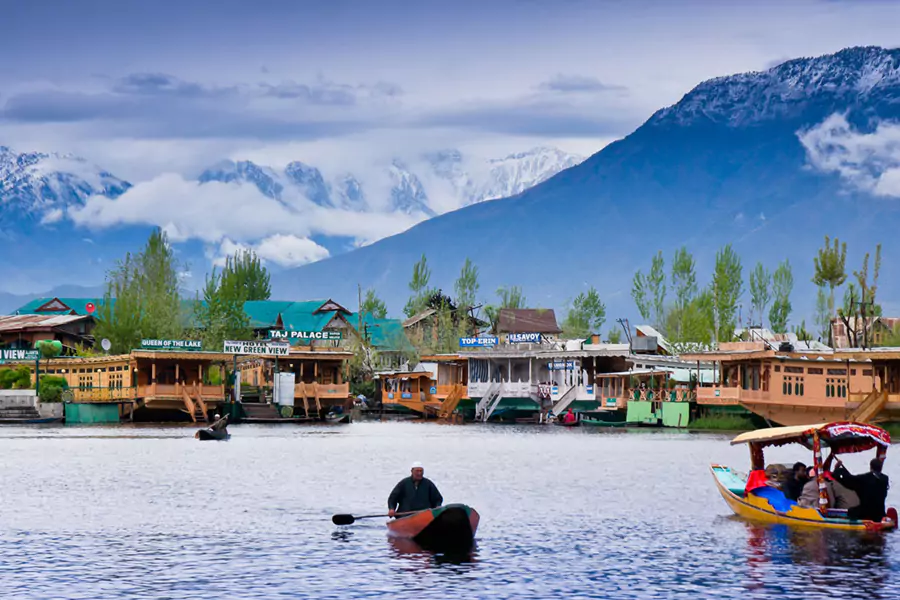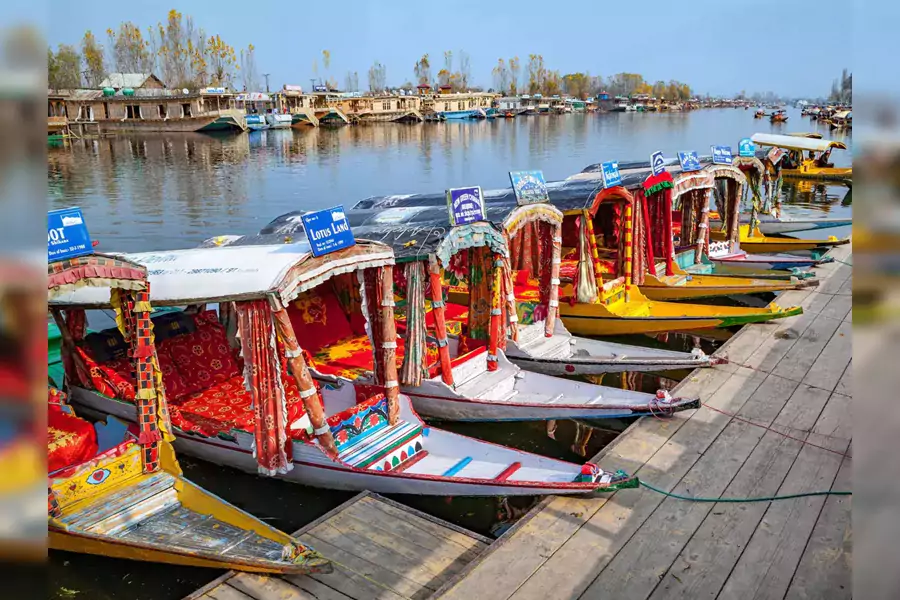India, rich in sacred sites, beckons seekers of peace, with the ‘Chhota Char Dham Yatra of Uttarakhand’ standing out as a profound spiritual journey. Hindus believe that undertaking such a pilgrimage in their lifetime can liberate them from the cycle of birth and rebirth.
Annually, thousands of pilgrims, including international tourists, are drawn to the Chota Char Dham Yatra in Uttarakhand.
The journey typically begins from the revered center of Haridwar, where devotees partake in the sacramental bath in the holy waters of the Ganges. Haridwar, along with other significant places in Uttarakhand, contributes to the spiritual energy of Hindu beliefs and can be explored during the Chota Char Dham Yatra.
This pilgrimage offers an incredible opportunity to discover the majestic landscapes of Uttarakhand. When one feels the “Calling,” it is a transformative moment to redefine perspectives on religion and faith. Now is the opportune time to delve into deep spirituality.
Popular Selling Chardham Yatra Tour Packages:
- Char Dham Yatra by Helicopter
- Kedarnath Badrinath Yatra Package
- Yamunotri Gangotri Tour Package
- Kedarnath Badrinath with Valley of Flowers
- Do Dham Yatra Tour Package
List of Places to Visit During Chardham Yatra
Places to visit During Chardham Yatra : Here is the Complete List of Destinations to cover During Chardham Yatra including Haridwar, Rishikesh, Yamunotri , Uttarkashi, Gangotri Dham etc..
Haridwar & Rishikesh
- Har Ki Pauri: ‘Har ki Pauri’ in Haridwar is of great Hindu significance, where King Bhagirath’s penance led Lord Shiva to allow the holy Ganga to flow through his locks. Devotees visit to take a sacred dip, seeking salvation for their ancestors.
- Mansa Devi Temple: Perched on a hilltop, the Mansa Devi Temple is accessible via a cable car ride. Devotees believe that Goddess Mansa grants their wishes, and they tie threads with their desires to the branches of a sacred tree in the temple. When their wishes are fulfilled, they return to untie the threads from the tree.
- Chandi Devi Temple: Situated atop Neel Parvat, the Chandi Devi Temple is dedicated to Goddess Chandika Devi. Accessible by bus from Mansa Devi Temple, it is considered one of Haridwar’s Siddha peethas where genuine devotees’ wishes come true.
- Ganga Aarti: The sacred Ganga Aarti is performed on the ghats of Har ki Pauri during the evening. Vedic hymns and prayers create a divine atmosphere, providing a sense of peace and solace. The sight of numerous lighted diyas floating on the Ganga adds to the enchanting charm of the aura.
- Neelkanth Mahadev Temple, Rishikesh: Dedicated to Lord Shiva in the form of Neelkanth, this temple commemorates the legend of Shiva consuming poison during Samudra Manthan. The blue throat (Neelkanth) is a result of this act.
- Trimbakeshwar Temple, Rishikesh: A renowned temple in Rishikesh, Trimbakeshwar is a 13-storey building with each floor housing a shrine of different forms of Lord Shiva. Pilgrims cross the Laxman Jhula to visit this temple.
- Triveni Ghat, Rishikesh: Situated at the confluence of the holy rivers Ganga, Yamuna, and Saraswati, Triveni Ghat is believed to cleanse sins with a holy dip. The Maha Aarti held during twilight is a major attraction, filling the air with spirituality and mysticism.
Two routes lead to Yamunotri & Gangotri from Haridwar. The first route passes through Dehradun – Mussoorie – Barkot, while the second route goes via Rishikesh – Uttarkashi. Both routes offer unique and scenic journeys to these sacred destinations.
Here are Some Must-Visit Places Enroute to Yamunotri-Gangotri via First Route
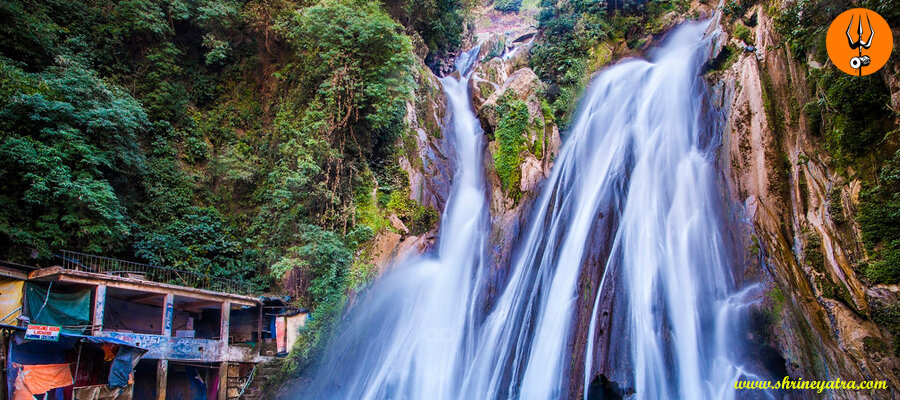
- Lachhiwala, Dehradun: One among the best picnickers’ spots in the vicinity of Dehradun. Those pilgrims going to Yamunotri are welcome to stay here for several hours or enjoy bird-watching with peace.
- Saahastradhara (water-spring) at Dehradun: This place serves as a perfect site to refresh one’s thoughts. It is ideal for a stopover couple of hours journey towards.
- Robber’s Cave, Dehradun: Guchhupani, formerly known for robber hideouts, features a cave with a cold-water spring that disappears and re-emerges at various points. The interior reveals stunning waterfalls, adding to the cave’s allure.
- Kempty Falls-Mussoorie: As you go towards Yamunotri, there is another famous spot called Kempty falls situated on the way to Mussoorie. As the best picnic spot in mussoorie, it makes an ideal place to take a refreshing dip in the icy fall waters that are always flowing. Alternatively, you can go for Boating at Mussoorie Lake nearby.
- Barkot: Barkot, the closest hamlet to Yamunotri in the char dhams pilgrimage, offers breathtaking panoramic views of the snow-covered Bandarpoonch Peak in the Garhwal Himalayas. The ancient Shiva Temple stands as a prominent attraction in this picturesque locale.
- Hanuman Chatti: Hanuman Chatti, a trekking hub at the confluence of Yamuna River and Hanuman Ganga, is the starting point for journeys to Yamunotri, Dodi Tal, and Darwa Top. The serene locale, adorned with a small Hanuman Temple, offers a pristine connection to nature, with visitors hiring transport to continue to Janki Chatti for the 6 km ascent to Yamunotri.
- Janki Chatti: Janki Chatti, the final motorable point before Yamunotri, boasts rejuvenating hot springs for tired pilgrims. The 6 km ascent provides breathtaking views of snow-capped mountains and serene landscapes, accessible by foot or rented ponies and palanquins.
- Kharsali: Kharsali, located 1 km from Janki Chatti, houses the ancient Shani Dev Temple where devotees honor Lord Shani before their journey to Yamunotri. In winter, when Yamunotri Temple is closed, the idol of Goddess Yamuna is venerated at this temple for six months until the temple reopens.
Best Places to Visit in and around Yamunotri
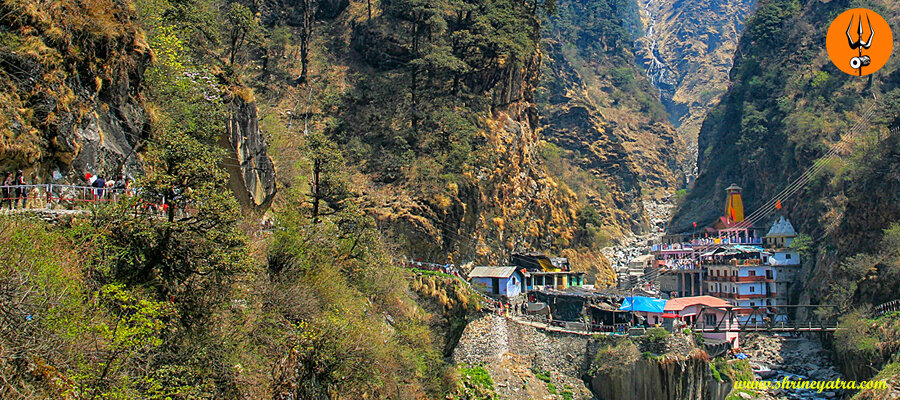
‘Char Dhams’ has the first Dham called Yamunotri which is the divine place of Goddess Yamuna. This is the source of River Yamuna. According to Hindu mythological beliefs, proposed by Tirtha (1988), Goddess Yamuna was a sister of Lord Yama (death god); thus, bathing in the holy waters of Yamuna brought death with no agony. The following are the top places to see in Yamunotri.
- Surya Kund: An ancient hot water spring named after the father of Goddess Yamuna, The Sun (Surya) God. At Yamunotri, the pilgrims first bathe in ‘Surya Kund’ and cook rice and potatoes, tied up in a muslin cloth immersed into the hot water of this spring.
- Divya Shila: Located near the Surya Kund, it is a rock pillar.
- Yamunotri Temple: This is the key temple esteemed with goddess Yamuna in the form of a silver idol, the main shrine of ‘Divya Shila’ whereas per tradition devotee’s 1st homage on Divya Shila before going into major temple.
- Champasar Glacier: Origin that provides Origin to actually Yamuna River few km. above Major Temple.
- Prakateshwar Cave: This mystic cave is located enroute to Uttarkashi from Barkot, however, because of very steep slope and less accessibility; Pilgrims usually visits this temple before reaching main temple return.
On the way to Yamunotri Temple, many pilgrims visit this cave that is famous for its limestone formation quite resembling the Shivlinga. In the case of Yamunotri, pilgrims return to Uttarkashi after getting divine darshans of Yamunaji and from there; further move towards other Dhams falling in ‘Char Dham Circuit’.
Top Places to Visit in and around Uttarkashi
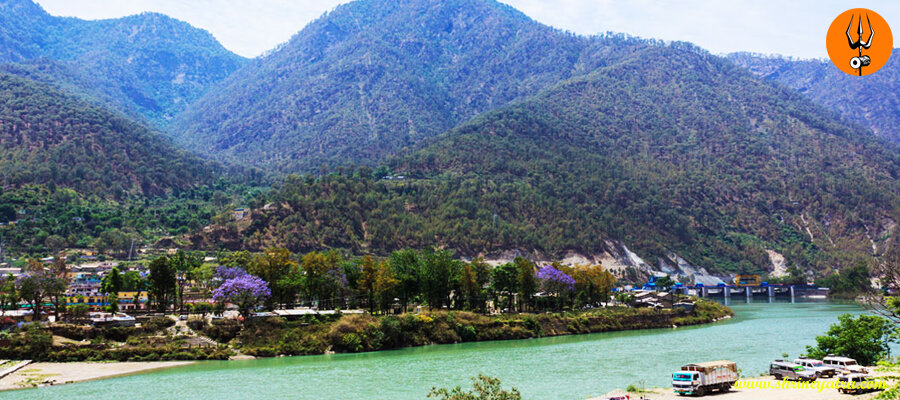
It is situated on the banks of River Bhagirathi and functions as one of the ancient holy cities. Uttarkashi is full of beautiful temples and ashrams. Those going to Gangotri normally attend Uttarkashi for one day to receive God’s blessings. Some of the best places to visit in Uttarkashi are given below.
- Vishwanath Temple: The Vishwanath temple is the most ancient and holiest shrine of Lord Shiva. Legends say that this is the place where Lord Shiva saved Rishi Markandeya from Yama, the God of death. The ‘swayambhu lingam present in the temple, idols of Goddess Parvati, Lord Ganesh and Rishi Markandeya sitting in a meditative position.
- Shakti Temple: Opposite the Vishwanath Temple is me ‘Shakti Temple’ devoted to worshipping Durga.
- Gangnani: Situated on the way to Gangotri, this tiny hamlet is famous for its natural hot water spring called ‘Rishikund Teerth’ and here trident (Mother Goddess Power) of weight 18 kg Gori Parbat-Major destination enroute to yuvamonastery.
- Harsil: Nestled on the Bhagirathi River banks, Harsil, a hidden gem in Uttarakhand, draws pilgrims en route to Gangotri for a purifying dip. Take a brief stop to soak in its unspoiled natural beauty, crisp mountain air, and refreshing weather. Explore the nearby attraction of ‘Sattal,’ a cluster of alpine lakes accessible via a 7 km trek from Harsil.
- Dharali: Is yet another beautiful village with apple orchards and it is located on Harsil. As you proceed to Gangotri, all along the way are welcoming magnificent Apple Orchards that appear like they have opened their arms for you. Shiva Temple, another famous attraction of this small town attracts many pilgrims enroute.
- Mukhba Village: Mukhba Village, near Dharali, is a picturesque hamlet that becomes the winter abode for Goddess Ganga when the main Gangotri temple is closed. Adorned with rustic wooden huts, pine and rhododendron trees, and vibrant flowers, it resembles a postcard-perfect scene. Don’t miss the Ganga Temple in Harsil, where the idol of Goddess Ganga resides during the winter months.
- Bhairon Ghati: It is located about 10 km in the valley. prior to Gangotri, at the junction between Bhagirati River and Jat Ganga. The Valley comprises of ancient temple of “Bhairavnath” devoted to Lord Shiva which is surrounded by dense Pine trees and gurgling Bhagirathi flowing down the mountains.
Best Places to See in Gangotri
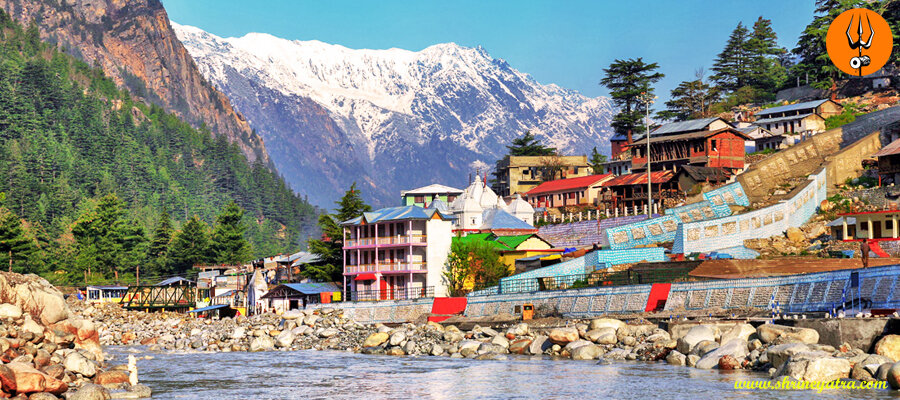
Gangotri, where the Goddess Ganga descended on earth and made it sacred. The river starts from Gaumukh Glacier situated 18 km ahead Gangotri town initially called as Bhagirathi and meet River Alaknanda at Devprayag, transmuting to sacred River Ganga. Gangotri temple, Submerged Shivalinga – symbolising Lord Shiva receiving the Ganges at Gangotri Temple, Suryakund waterfalls, Pandava gufa {cave} (20 km from Gangotri), Bhagirathi Shila and Gaumukh Glacier– the source of river Ganga etc.
- Gangotri Temple: Main Shrine of Goddess Ganga. The serenity and quietude of the temple environment will give you inner peace and solitude.
- Submerged Shivlinga: It is located there, and it is an occurrence when its water goes down during certain times. According to local lore, this was the place where Lord shiva sat when he received river gange into his matted hair to lessen the destructive impact of the majestic stream onto earth.
- Suryakund Falls: An additional most popular attraction is the Suryakund.
- Pandava Gufa: Pandavas of Mahabharata were known to have ascended into heaven through this cave.
- Bhagirathi Shila: It was here, on the rocky cliff by Bhagirathi River, that King Bhagirath had made his prayer to Lord Shiva.
- Gaumukh Glacier: Then there is Gaumukh You have to trek uphill for about 18 km to get to Gaumukh. it will entail trekking on foot all the way from Gangotri, obtaining special permits from the Forest Department office at Uttarkashi because the area subjected is susceptible to land sliding.
- Tapovan and Nandavan: The brave ones to proceed from Gaumukh towards other wonderful places Tapowan and Nandanvan where the sight of Shivling Peak is simply impossible to describe in words. The treks are very tough, and it is important that individuals should be physically prepared for unforeseen incidences and natural disasters.
The journey then continues to Kedarnath, with two routes from Uttarkashi: One via Srinagar – Rudraprayag – Augustmuni – Ukhimath– Guptkashi -Sonprayag- Gaurikund and the other, Gangotri-Uttarkashi-Tehri-Mayali-Ghanshali-Ukhimath Gupta Kashi-Sonprayag-Kedarnath.
Best Places to See in and around Ukhimath
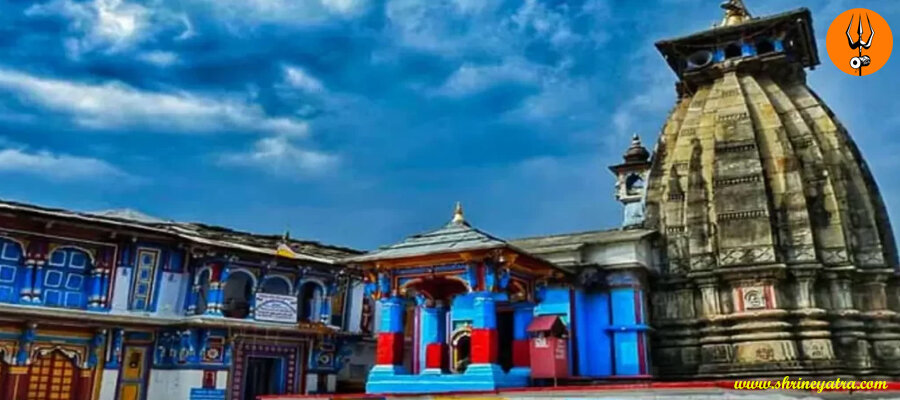
Ukhimath, a serene village, becomes the winter sanctuary for the deities of Lord Kedarnath and Lord Madhyamaheshwar when their main temples are closed.
- Omkareshwar Temple: Key attractions include the Omkareshwar Temple, where both deities are worshipped.
- Madhyamaheshwar Temple: In the run from the Pandavas, Lord Shiva’s belly part fell at this temple, another holy temple of the ‘Panch Kedar’ group.
- Kali Math Temple: One of the 108 divine Shakti Peeths, ‘Kalimath Temple’ is devoted to Goddess Kali. This is the spot where, legend has it, Goddess Cali killed the evil Raktabeej. This temple sees the visitation of thousands of pilgrims annually.
Best Places to Visit in and around Guptkashi
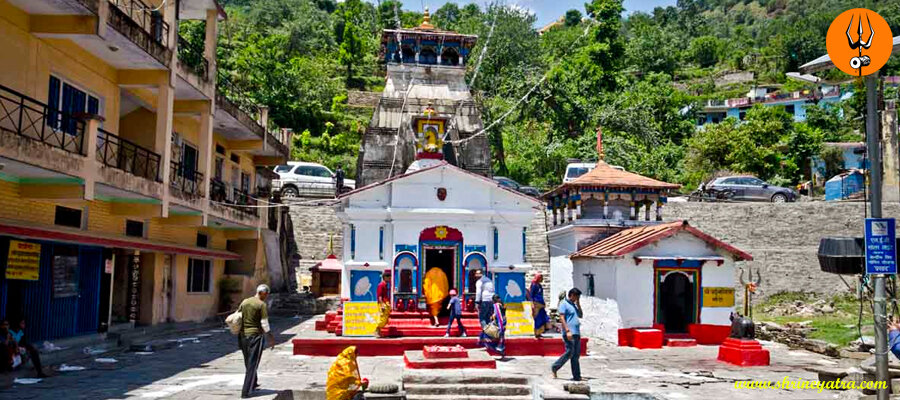
Guptkashi is a scenic town located on the banks of River Mandakini and nestled amidst the Chaukhamba peaks in Garhwal Himalayan range. In mythical legends, Gupt Kashi is the place that Lord Shiva proposed Goddess Parvati for their marriage. Another legend of Gupt Kashi relates to the times of Mahabharata when Pandavas pleaded with Lord Shiva after their war to save them from fratricidal guilt. Lord Shiva eluded them by concealing in Gupt Kashi with the guise of Nandi bull. On reaching they’re at Gupt Kashi, Pandavas identified Shiva in the form of bull and attempted to grab his tail as well as hind legs. At the very moment, Lord Shiva vanished from Gupt Kashi. Actually, this surreptitious hiding of Lord Shiva here gave the town that prefix to its name.
Following are the Main Attractions in Guptkashi:
- Vishwanath Temple: When the Mughal Emperor, Aurangzeb, attacked the Vishwanath Temple in Kashi, the original Shivling was brought to the Vishwanath Temple from there. There are huge crowds of pilgrims seeking God’s blessing here in huge numbers.
- Ardhanarishwar Temple: Near Vishwanath Temple, the Ardhanarishwar Temple houses Lord Shiva and Goddess Parvati incarnate as half man and half woman. As well as its significant religious significance, Manikarnika Kund contains two springs representing Ganga and Yamuna that bathe the Shivlinga residing in its centre.
- Sonprayag: The town is located on the confluence of two holy rivers, Basuki and Mandakini. It is a famous temple dedicated to Lord Vishnu in the village of Triyugi near Sonprayag. As per the puranic legends, this is the place where Lord Shiva married to Goddess Parvati in front of Lord Vishnu.
- Gaurikand: This place is located 15km. The place is based ahead of Gupt Kashi and this serves as the base site from where the trek for around 20 km. needs to be started in order to reach at Kedarnath. Before going to Kedarnath, the pilgrims first take bath in hot waters of Gaurikund and worship in ‘Gauri Temple’. As per mythology, Gaurikund is believed to be the place where Goddess Parvati had undertaken reparation and adored Lord Shiva. Another belief is that, at this divine place of Gaurikund, Lord Shiva gave boons to Lord Ganesha and made him the elephant headed child.
From Gaurikund, pilgrims can either walk or hire ponies and palanquin to reach Kedarnath town that lies on the height of 11700 ft above sea level. Several private helicopter services also fly at Gaurikund an enabling pilgrim to travel by air up to Kedarnath.
Top Tourist Attractions in Kedarnath
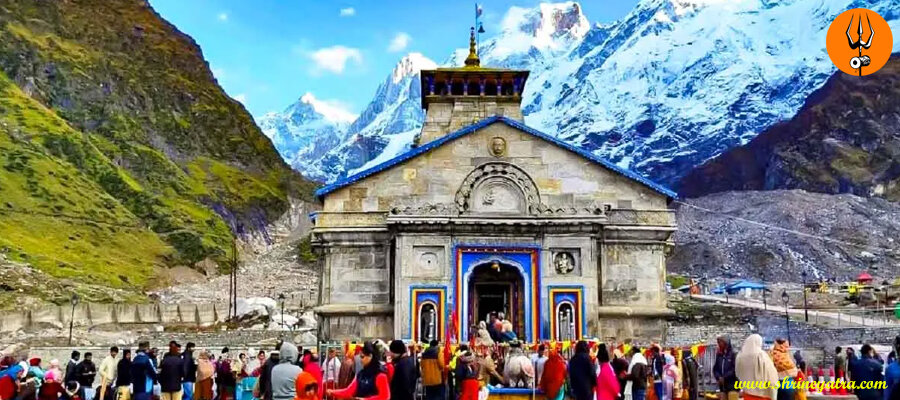
Kedarnath is the third Dham of Char Dham where it is believed that, in order to absolve them from the sins of killing their own brothers and many sages while fighting Mahabharata battle, Lord Shiva appeared with a triangular Jyotirlinga. Below are some of the main tourist attractions in Kedarnath.
- Kedarnath Temple: It is the most important temple at Kedarnath where one of 12 Jyotirlingas, Lord Shiva’s sanctuary is believed to be maintained. Furthermore, the temple is considered one of the ‘Panch Kedars’ and receives a huge number of tourists from across the world. Kedarnath Temple is situated at the head of River Mandakini and surrounded by Garhwal Himalayas mountain range, Kedar and Swargarohini peaks which give a spiritual feeling to all devotees who visit there.
- Vasuki Tal: In this sacred lake, the Lord Vishnu is said to have bathed. A tough 8 km. trek from the Kedarnath Temple leads to The Tal.
- Bhairav Temple: As the guardian deity of Kedarnath town and temple when everything becomes snow clad during winters, this temple is dedicated to Lord Bhairavnath. One can climb up for a distance of about one km from Kedarnath and enter this sacred abode. Words cannot explain the views of Kedarnath valley from Bhairavnath Temple.
Kedarnath to Badrinath is the final route for one of the Char Dham. One can go to Ukhimath and also take Chamoli – Gopeshwar -Vishnuprayag route or directly go through Ukhimath – Chopta- Gopeshwar-Chamoli-Joshimath -Vishnuprayag. The second route to Badrinath from Kedarnath is through Rudraprayag – Karnaprayag – Nandprayaga – Chamoli – Joshimathi – Vishnupayag, skipping Ukhimat and Chopta. This is where the two routes coalesce, considering that they merge at Chamoli. Some of the places to visit on your way to Badrinath through these routes include.
Best Attractions to Visit in and around Chopta
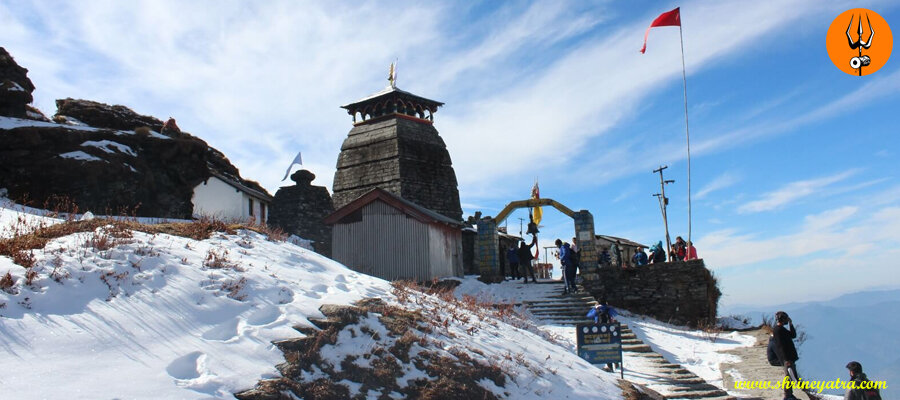
A small village near Ukhimath major known for such activities as trekking, climb rock and rappel. List of few major attractions near Chopta.
- Tungnath Temple: The ‘Tungnath Temple’ dedicated to Lord Shiva, believed to have been built over 1000 years ago is one of the revered temples in the ‘Panch Kedar’ group.
- Chandrashila Peak: Pilgrims have to trek for about 3 km. from Tungnath Temple in order to reach the Chandrashila Peak.According to the legends, it is believed that this is where arms of Lord Shiva fell while he was chased by Pandavas when he took bull form. You will hike over oak and rhododendron forests and green meadow.
- Gopintah Temple: The Gopinath Temple is near Chopta, at a place called Gopeshwar village in theChamoli district. Standing on Chandrashila peak breathtaking views ofHimalayan peaks like Kedar, Chaukhamba, Trishul and Nanda Devi are spellbinding. The main attraction at this temple is the trident that Lord Shiva had thrown on God of Love – Kamdev.
Top Places to Visit on the Way to Badrinath
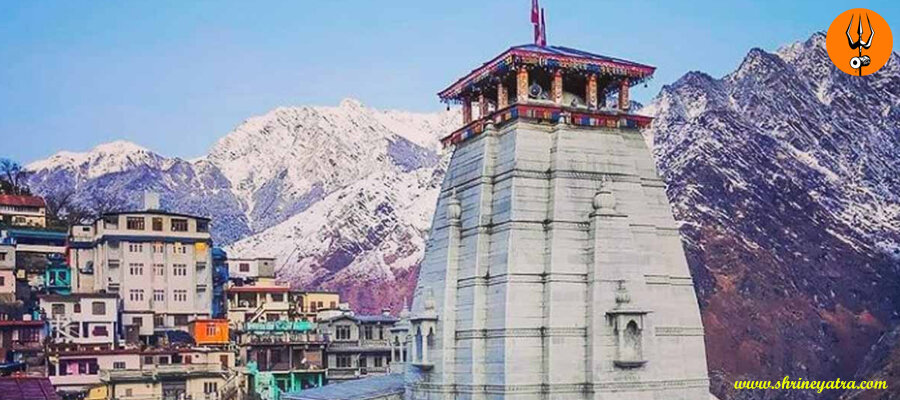
- Nandprayag: Situated in the Chamoli district of Uttarakhand, Nandpryag is one of the ‘Panch Prayags’ where river Alaknanda meets River Nandakini. According to puranic stories, it is at this place wherei King Nand (husband of Yashoda who brought up Krishna) worshipped Lord Vishnu but He appeared and granted him the boon that when he would be reborn in human form as son to him and Yashoda. Lots of pilgrims who hearts for Badrinath can be encountered at this place visiting small temple.
- Joshimath: This is a significant traffic point on the way to Badrinath, buses, cars and taxis proceed together from here till Badrinath and at night the roads are closed. Enchanting landscape of Himalaya peaks enroute, exposes to the exquisite workmanship of nature and God. This is also the biggest halting place where people stop before going to Auli, which is the fantastic skiing destination for adventure buffs in winter. A 3km. one can avail cable car ride from Joshimath to reach Auli. Joshimath is also the starting point site for trek to ‘Valley of Flowers’ and ‘Hemkund Sahib’. In Joshimath the main attractions are.
- 1.) Narsingh Temple: This is the winter abode of Lord Badri who is transferred here when main temple of Badrinath remains closed from Diwali to Akshay Tritiya.
- 2.) Shankaracharya Math: it’s a holy place and is believed to have been established by the Hindu Guru, Adi Shankaracharya, here he founded the temples of Lord Badri and Rajrajeshwari Devi temple.
- Vishnuprayag: Another holy prayags of the ‘Panch Prayag’ cluster, Vishnuprayag is located at the confluence of rivers Alaknanda and Dhauliganga in Chamoli district in Uttarakhand. Legend has that sage Narad prayed to Lord Vishnu at this sacred spot. Many pilgrims bathe in the holy water of ‘Vishnu Kund’ and also visit the ‘Vishnu Temple’, which is dedicated to Lord Vishnu.
- Hanuman Chatti: This is a very old temple of Lord Hanuman on the way to Badrinath. Legend dictates that this is the spot where Lord Hanuman crushed the ego of Bheema, one of Mahabharata’s five Pandava brothers. Whosoever is a true devotee praying to Lord Hanuman in this temple has all his wishes granted.
- Pandukeshwar: The site with ancient ‘Yog Dhyan Badri Temple’ that dates to as old as the main BadrinathTemple. The temple dedicates its worships on lord Vishnu in a dhyan mudra. The temple is also one of the Sapt Badris or the seven abodes of Lord Vishnu.
Top Places to Visit in Badrinath
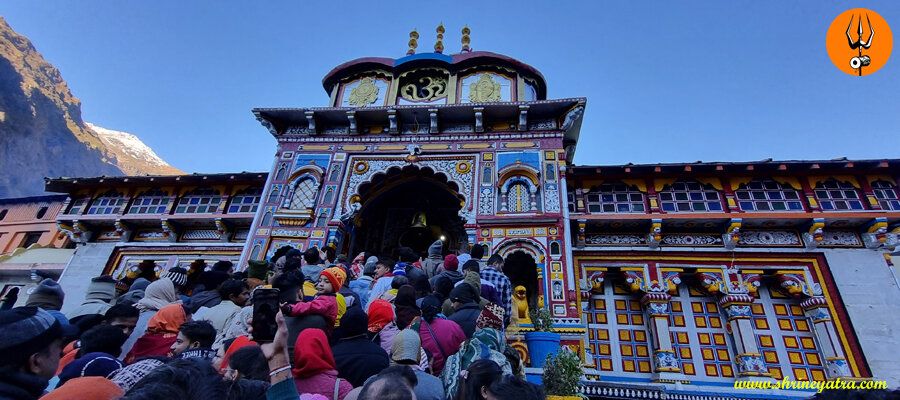
Badrinath’ is named after ‘Badri’ which stands for berry in local language. It is believed that as per legends, Lord Vishnu performed great penance here and Goddess Lakshmi who was the consort of Lord Vishnu shallowed him from harsh sun taking form of berry trees. Sightseeing spots in Badrinath are such as the following.
- Badrinath Temple: Badrinath Temple, The principal deity of the shrine is Lord Vishnu who is worshipped here as Nar and Narayana. The black saligram stone deity is worshipped by thousands and even more come to seek blessings.
- Tapt Kund: Natural hot water spring which believe to have medicinal properties. Just next to Tapta Kund is another holy kund called Narad Kund, where the pilgrims take a dip in hot waters before entering the main shine. It is said that Narad Muni wrote ‘Narada Bhakti Sutra’ here.
- Mana Village: It is the first Indian village en-route to Tibet and houses a serene ‘Vyas Cave’ & “Ganesh Temple”. During Composition of the Mahabharata, it is said that great sage Vyas took help from Lord Ganesh to write it in a very fast speed.
- Bheem Pul: It is a natural rock bridge, which is believed to have been made by Bheema by laying a huge rock on the Saraswati River during their ascent to heaven according to legend. Vyas Cave and Ganesh Temple are also associated with this tale.
- Saraswati River: The Saraswati River holds immense religious importance as it said that Rigveda was written at the banks of this sacred river.
- Vasudhara Falls: The beautiful falls are also doled out of a 6 km. trek from the Mana Village. At the Vasudhara Falls, one encounter captivating views of snow-clad Himalayas and Alaknanda River feeding glaciers which are just excellent view.
After the darshans of Lord Badri at Badrinath, pilgrims make their way back to Rishikesh – Haridwar. Here is some additional route from Journey return:
- Koteshwar Temple in Rudraprayag: This is another one that is located in a cave on the Alaknanda River banks and it pays. The temple is located 5 km away from Rudraprayag’s main market.
- Hariyali Devi Temple, Rudraprayag: It is 35 km from main town in a place where Mata Vaishno Has to pray lord Shiva for helping her- daughter of Lord shiva conquering ‘Bhasmashur’ the devil as per mythology. Moreover, the temple is a Siddha Peeth which also falls among the 58 in India. The hands fell at Hariyali Devi.
- Kartik Swami Temple, Rudraprayag: Located in one of the most beautiful locations, Kartik Swami Temple is actually the pride of Rudraprayag. Located 3050m above sea level, the temple is dedicated to Kartikeya who is the son of Shiva and Paravati. Based on its religious merits, the shrine also provides a beauty that cannot be described from the Himalayan Range.
- Dhari Devi Temple, Srinagar: Situated on the banks of Alaknanda River, this temple is home to the deity of Goddess Dhari who supposedly transforms her appearance from a young girl to adult woman and ultimately an old lady throughout a day; and in all truthfulness it is one such quiet destination that you must scour along when being at Rudraprayag- Nagnath Pokhri Route in Uttarakhand.
- Kamleshwar Mahadev Temple, Srinagar: The temple is devoted to the Hindu god Shiva and has tremendous classical as well as religious value among the people of this location. Legend has it that Lord Rama with his ‘Kamalnetra’ (Lord Rama’s Lotus eye) worshipped lord Shiva. That is why temple became known as ‘Kamleshwar’.
- Raghunath Temple, Devprayag: This is the eldest place of worship marking reverence to Lord Rama.
- Brahma Kund and Vashisht Kund at Devprayag: In these kunds there are figures of Rama, Sita abd Lakshman carved.
- Baital Shila, Devprayag: A small water spring believed to cure several diseases including leprosy. Then the pilgrims return to Rishikesh – Haridwar after darshans of Lord Badri at Badrinath. Some other points can be witnessed enroute of return journey.
So, we hope you have got a decent idea of the places which must be travelled in Uttarakhand through this blog post. Trust us, there are many more places other than those that can literally occupy all your time. In fact, there are several places that have the same significance despite being far from the major Chota Chardham destinations.

